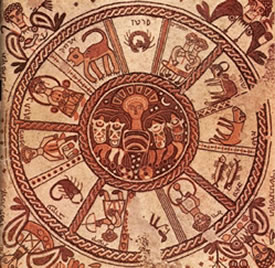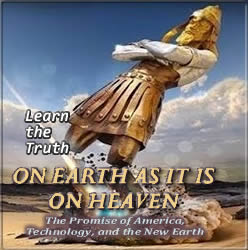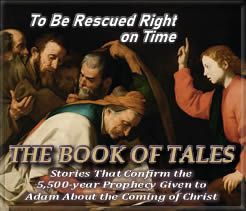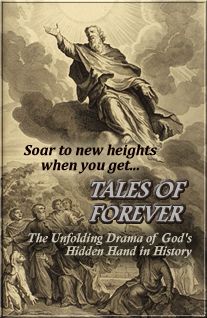Misconception #42 (Cont’d)
All Students of The Zodiac are Fools or Heretics
The prophet Amos told us: “Seek Him Who made the Seven Stars (referring to the Pleiades) and Orion.”1 The psalmist said: “God knows exactly how many stars there are, having given each and every one a name of its own.”2 And when Job pondered the majesty of God, he declared:
It’s God Who sealed up the stars and He alone Who spread out the Heavens, Who made Arcturus, Orion, and the Pleiades. God does great things beyond our understanding; yes, and wonders without number.3
The word “wonders,” from the Hebrew word pala, describes things that are, by implication, marvelous, difficult, or hidden.
So, if it really was God Who created the stars, and not the devil, then why did He place these wonders—with all their marvelously difficult and hidden meaning—in the night sky?
And God said, “Let there be lights in the firmament of the Heaven to divide the day from the night; and let them be for signs and for seasons, and for days and for years.”4
Right from the start, then, God didn’t create the stars just to mark the transition from day to night, to determine one season from another, or to denote which year we were living in. He also created them to act as “signs.” In fact, the first time the Scriptures refer to a “sign,” it’s used in relation to the stars God placed in the Heavens.
Story Continues Below
Says Richard Price—the founder and CEO of Academia.edu—on his podcast In Depth With Academia:
Fish Tales (From the Belly of the Whale): Fifty of the Greatest Misconceptions Ever Blamed on The Bible is:
To hear Price’s book review of Fish Tales (From the Belly of the Whale), CLICK HERE.
To hear Kent and Zen Garcia talk about correcting biblical misconceptions, from October 28, 2021, CLICK BELOW.
Story Continues From Above
According to Strong’s Exhaustive Concordance, the Hebrew word for “sign” is owth, which means a “signal” (literally or figuratively), as a “flag,” “beacon,” “monument,” “omen,” or “evidence.” By using this word owth, to describe God’s purpose in creating the stars, The Bible clearly conveys the idea these signs were designed to reveal something very specific. So, what is God’s specific message displayed in these signs?
King David, in writing Psalm 19, said:
The Heavens declare the glory of God, and the firmament reveals His handiwork. From day to day, it speaks forth; night after night, it displays knowledge. There’s no place on Earth, where speech and language exist, that its voice isn’t heard. Its message resounds throughout the whole world, and its discourse reaches to every corner of the globe.5
Interestingly enough, the Hebrew word here for “knowledge,” which the Heavens are said to display each night, is a word that’s derived from the root word yada, a unique word that conveys a variety of meanings. It speaks of the ability to learn something through observation, including the discovery of something to be understood figuratively, literally, euphemistically, and inferentially (particularly via recognition through careful consideration). And it’s a knowledge that comes as the result of a declaration of instruction and that requires discernment in receiving that instruction.
Based on this, then, we’d have to admit that God Himself expected us to pay attention to what He was trying to convey via His starry messengers. So what could that message be? Is it a message intended for everyone? Or is it some special revelation that only an elite few will be able to understand?
Let’s resume the task of piecing this puzzle together.
Remember: “The Heavens declare the glory of God.” What’s the glory of God?
The Apostle John said, “The Word became flesh and dwelled among us. We’ve seen His glory, the glory of the one and only Son from the Father, full of grace and truth.”6 Confirming this, the writer of The Book of Hebrews declared, “The Son is the radiance of God’s glory and the exact representation of His being.”7
So, if Jesus is the glory of God, then it follows that the Heavens should declare Jesus, the Son of God.
Sure enough, as we piece together the puzzle, we do find that the message conveyed in The Zodiac reveals the story of Christ, the Redeemer. In fact, when we look at the evidence—both scripturally and astronomically—we find a perfect correspondence with the symbolism in each dimension of God’s creation.
The most graphic example of this symbolic correspondence is revealed when we look at the Four Living Creatures described in The Book of Revelation and compare them with their scriptural counterparts in The Old Testament. To do this, let’s begin in the second chapter of The Book of Numbers:
The Lord spoke to Moses and Aaron, explaining that, with the Tabernacle at its center, all the tribes of Israel are to set up their camps around it, with every tribe marking their camp with the standard according to his father’s name.8
In the case of Judah, to the east, their standard was that of a lion; to the south was Reuben, whose standard was a man; to the west was Ephraim, whose standard was a bull; and to the north was Dan, whose standard was an eagle, or, its natural enemy, a snake or a scorpion.
Next we turn to the way these standards of the four tribes of Israel aren’t grounded just in scriptural terms but also in astronomical terms. And we find this in a place where most Christians would never think to look—a Jewish synagogue. More specifically, we find it in the mosaic floor inside the Bet Alpha Synagogue, constructed in northern Israel around the sixth century. There, a zodiacal wheel portrays each of the four cardinal points, in correspondence with each of the four chief tribes of Israel: There’s the lion of Judah, next to Leo; the man of Reuben, next to Aquarius; the bull of Ephraim, next to Taurus; and the scorpion of Dan, next to Scorpio. A picture of this zodiacal wheel can be seen on page fifteen of the book The High Holy Days. This floor plan even depicts the four cardinal signs of The Zodiac in relation to the months we’re so familiar with: Leo with July-August, Aquarius with January-February, Taurus with April-May, and Scorpio with October-November.








